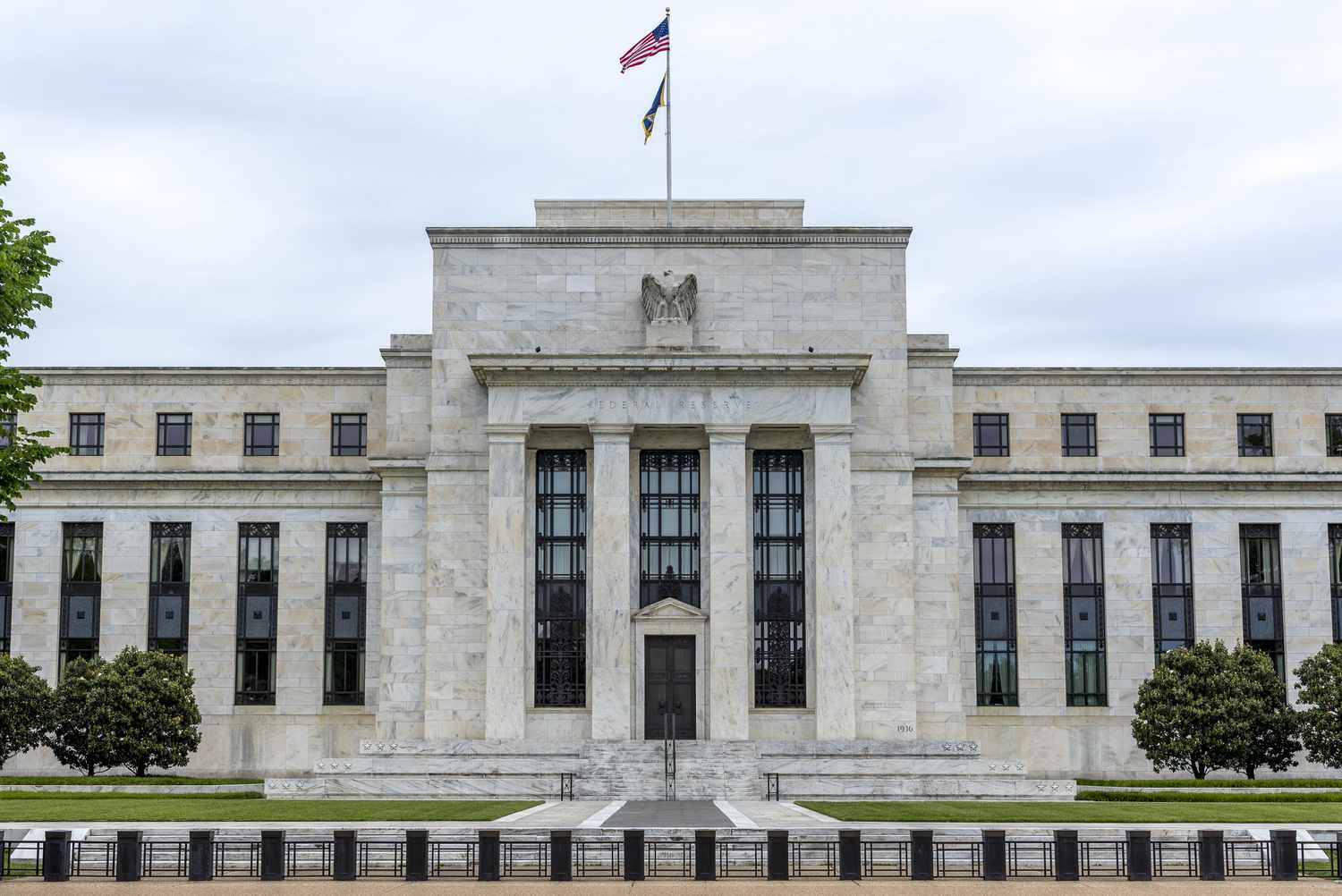Markets kick off June mixed, eyeing trade whispers and key economic data. Tech resilient, but volatility looms as central banks and inflation take center stage.

NVidia reports earnings, Salesforce follows suit, and the US economy contracts — this week’s financial news and big takeaways.

U.S. stock markets concluded a holiday-shortened week with a generally positive tone, capping off what is shaping up to be the best month for the S&P 500 and Nasdaq Composite since late 2023. After being closed on Monday, May 26th, for Memorial Day, investors returned to a week packed with crucial earnings reports, particularly from the tech sector, and key inflation data that offered fresh insights into the economic landscape and the Federal Reserve’s potential policy path.
The undisputed star of the week was Nvidia (NVDA), which reported its earnings after the bell on Wednesday, May 28th. The artificial intelligence chip behemoth once again shattered already lofty Wall Street expectations. The company announced profits and revenue that significantly exceeded analyst forecasts, driven by unrelenting demand for its AI processors used in data centers. Nvidia also provided a bullish outlook, signaling continued robust growth as the AI revolution unfolds.
The market reaction was immediate and overwhelmingly positive. Nvidia’s shares surged in after-hours trading on Wednesday and continued their ascent on Thursday, lifting the broader tech sector and contributing significantly to the Nasdaq’s strong weekly performance. Analysts rushed to upgrade price targets, with many highlighting the company’s expanding moat in the AI hardware space and its ability to consistently execute. “Nvidia is not just meeting the hype; it’s defining the next era of computing,” commented one tech analyst. The report underscored the transformative impact of AI across industries and reaffirmed Nvidia’s pivotal role in this technological shift. The ripple effects were felt across the semiconductor sector and AI-related stocks, which saw renewed investor interest.

While Nvidia stole the limelight, other tech giants also reported. Salesforce (CRM), another closely watched name, delivered its quarterly results on Wednesday. The business software maker posted revenue growth that surpassed expectations, and its stock saw a positive premarket reaction on Thursday. The results suggested resilient demand for enterprise software despite broader economic uncertainties.
However, the picture was more mixed for other tech players. HP Inc. (HPQ), for instance, saw its shares tumble on Thursday after the PC maker missed profit expectations and issued a lighter-than-anticipated outlook. The company cited increased costs, partly related to ongoing trade tariff uncertainties, which have been a recurring theme for hardware manufacturers. This highlighted the varied fortunes within the tech landscape, with AI-centric companies generally faring better than those more exposed to traditional hardware cycles and geopolitical trade tensions. Dell (DELL) and Marvell Technology (MRVL) were also among the tech names reporting later in the week, with investors parsing their results for further clues on enterprise spending and semiconductor demand.

On the economic front, Thursday brought the second estimate for first-quarter Gross Domestic Product (GDP). The revised figures showed the U.S. economy contracted slightly less than initially thought, at an annualized rate of -0.2%, an improvement from the first estimate of -0.3%. The revision was attributed to upward adjustments in investment, partly offset by a downward revision in consumer spending. While still a contraction, the slightly better-than-expected GDP figure offered a small measure of relief, suggesting the economy might have had a bit more resilience in early 2025 than first perceived. Weekly jobless claims, also released Thursday, showed a slight uptick but remained at levels consistent with a relatively tight labor market.
The week’s most anticipated economic release arrived on Friday, May 30th: the Personal Consumption Expenditures (PCE) Price Index for April. As the Federal Reserve’s preferred measure of inflation, this report was under intense scrutiny. The data showed headline PCE rose 2.2% year-over-year, a slight deceleration, while core PCE (excluding volatile food and energy) remained steady at 2.6% annually. These figures were largely in line with economists’ expectations and suggested that while inflation remains above the Fed’s 2% target, it is not re-accelerating alarmingly. The market reaction was relatively calm, with the data reinforcing the view that the Fed is likely to remain patient and data-dependent.
Consumer sentiment figures released during the week, including The Conference Board’s Consumer Confidence Index on Tuesday, showed a partial rebound in May after several months of decline. Consumers expressed less pessimism about future business conditions and job availability, though concerns about high prices persisted.

Investors also gleaned insights from the Federal Reserve this week. On Wednesday, the Fed released the minutes from its May 6-7 Federal Open Market Committee (FOMC) meeting. The minutes reiterated the central bank’s commitment to bringing inflation down to its 2% target and indicated that officials felt monetary policy was “in a good place” to allow them to be patient and assess incoming data. The minutes acknowledged increased uncertainty regarding the economic outlook, partly due to trade policy, and highlighted the risks of both higher inflation and rising unemployment.
Several Fed officials also made public appearances throughout the week. While individual speeches varied in tone, the overarching message seemed to align with Chair Jerome Powell’s recent stance: the Fed will be data-dependent, and the path of policy will depend on how the economy, particularly inflation and the labor market, evolves. There was little to suggest an imminent shift in policy, with most market participants now expecting the Fed to hold rates steady through the summer, awaiting more conclusive evidence of inflation’s trajectory.
For the week, the S&P 500 and the Nasdaq Composite posted gains, driven significantly by the strength in Nvidia and the broader technology sector. The Dow Jones Industrial Average also saw a modest rise. Heading into the final trading day of May, the S&P 500 was on track for a monthly gain of around 6%, and the Nasdaq was eyeing a nearly 10% surge for the month, which would mark their best monthly performances since November 2023.
Trade policy discussions and tariff threats, particularly concerning the EU and China, continued to create pockets of volatility, as seen in the market’s reaction to various headlines throughout the week. However, any significant escalations appeared to be averted or postponed, allowing the market to focus more on earnings and economic fundamentals.
As May concludes, investors are looking ahead to June with cautious optimism. The strength in AI continues to be a dominant theme, but the broader market remains sensitive to inflation trends and the Federal Reserve’s policy signals. The resilience of the consumer and the labor market will also be key factors in shaping the economic outlook and market performance in the months to come.


Markets kick off June mixed, eyeing trade whispers and key economic data. Tech resilient, but volatility looms as central banks and inflation take center stage.

As of June 2025, the AI revolution is accelerating. From Meta’s plan for AI-generated ads to breakthroughs in healthcare, this technology is reshaping our world, bringing immense potential and critical questions.

AI’s surging power consumption raises environmental alarms. Explore its energy demands, carbon footprint, and the critical quest for sustainable AI solutions powering a responsible technological future.
NVidia reports earnings, Salesforce follows suit, and the US economy contracts — this week’s financial news and big takeaways.

U.S. stock markets concluded a holiday-shortened week with a generally positive tone, capping off what is shaping up to be the best month for the S&P 500 and Nasdaq Composite since late 2023. After being closed on Monday, May 26th, for Memorial Day, investors returned to a week packed with crucial earnings reports, particularly from the tech sector, and key inflation data that offered fresh insights into the economic landscape and the Federal Reserve’s potential policy path.
The undisputed star of the week was Nvidia (NVDA), which reported its earnings after the bell on Wednesday, May 28th. The artificial intelligence chip behemoth once again shattered already lofty Wall Street expectations. The company announced profits and revenue that significantly exceeded analyst forecasts, driven by unrelenting demand for its AI processors used in data centers. Nvidia also provided a bullish outlook, signaling continued robust growth as the AI revolution unfolds.
The market reaction was immediate and overwhelmingly positive. Nvidia’s shares surged in after-hours trading on Wednesday and continued their ascent on Thursday, lifting the broader tech sector and contributing significantly to the Nasdaq’s strong weekly performance. Analysts rushed to upgrade price targets, with many highlighting the company’s expanding moat in the AI hardware space and its ability to consistently execute. “Nvidia is not just meeting the hype; it’s defining the next era of computing,” commented one tech analyst. The report underscored the transformative impact of AI across industries and reaffirmed Nvidia’s pivotal role in this technological shift. The ripple effects were felt across the semiconductor sector and AI-related stocks, which saw renewed investor interest.

While Nvidia stole the limelight, other tech giants also reported. Salesforce (CRM), another closely watched name, delivered its quarterly results on Wednesday. The business software maker posted revenue growth that surpassed expectations, and its stock saw a positive premarket reaction on Thursday. The results suggested resilient demand for enterprise software despite broader economic uncertainties.
However, the picture was more mixed for other tech players. HP Inc. (HPQ), for instance, saw its shares tumble on Thursday after the PC maker missed profit expectations and issued a lighter-than-anticipated outlook. The company cited increased costs, partly related to ongoing trade tariff uncertainties, which have been a recurring theme for hardware manufacturers. This highlighted the varied fortunes within the tech landscape, with AI-centric companies generally faring better than those more exposed to traditional hardware cycles and geopolitical trade tensions. Dell (DELL) and Marvell Technology (MRVL) were also among the tech names reporting later in the week, with investors parsing their results for further clues on enterprise spending and semiconductor demand.

On the economic front, Thursday brought the second estimate for first-quarter Gross Domestic Product (GDP). The revised figures showed the U.S. economy contracted slightly less than initially thought, at an annualized rate of -0.2%, an improvement from the first estimate of -0.3%. The revision was attributed to upward adjustments in investment, partly offset by a downward revision in consumer spending. While still a contraction, the slightly better-than-expected GDP figure offered a small measure of relief, suggesting the economy might have had a bit more resilience in early 2025 than first perceived. Weekly jobless claims, also released Thursday, showed a slight uptick but remained at levels consistent with a relatively tight labor market.
The week’s most anticipated economic release arrived on Friday, May 30th: the Personal Consumption Expenditures (PCE) Price Index for April. As the Federal Reserve’s preferred measure of inflation, this report was under intense scrutiny. The data showed headline PCE rose 2.2% year-over-year, a slight deceleration, while core PCE (excluding volatile food and energy) remained steady at 2.6% annually. These figures were largely in line with economists’ expectations and suggested that while inflation remains above the Fed’s 2% target, it is not re-accelerating alarmingly. The market reaction was relatively calm, with the data reinforcing the view that the Fed is likely to remain patient and data-dependent.
Consumer sentiment figures released during the week, including The Conference Board’s Consumer Confidence Index on Tuesday, showed a partial rebound in May after several months of decline. Consumers expressed less pessimism about future business conditions and job availability, though concerns about high prices persisted.

Investors also gleaned insights from the Federal Reserve this week. On Wednesday, the Fed released the minutes from its May 6-7 Federal Open Market Committee (FOMC) meeting. The minutes reiterated the central bank’s commitment to bringing inflation down to its 2% target and indicated that officials felt monetary policy was “in a good place” to allow them to be patient and assess incoming data. The minutes acknowledged increased uncertainty regarding the economic outlook, partly due to trade policy, and highlighted the risks of both higher inflation and rising unemployment.
Several Fed officials also made public appearances throughout the week. While individual speeches varied in tone, the overarching message seemed to align with Chair Jerome Powell’s recent stance: the Fed will be data-dependent, and the path of policy will depend on how the economy, particularly inflation and the labor market, evolves. There was little to suggest an imminent shift in policy, with most market participants now expecting the Fed to hold rates steady through the summer, awaiting more conclusive evidence of inflation’s trajectory.
For the week, the S&P 500 and the Nasdaq Composite posted gains, driven significantly by the strength in Nvidia and the broader technology sector. The Dow Jones Industrial Average also saw a modest rise. Heading into the final trading day of May, the S&P 500 was on track for a monthly gain of around 6%, and the Nasdaq was eyeing a nearly 10% surge for the month, which would mark their best monthly performances since November 2023.
Trade policy discussions and tariff threats, particularly concerning the EU and China, continued to create pockets of volatility, as seen in the market’s reaction to various headlines throughout the week. However, any significant escalations appeared to be averted or postponed, allowing the market to focus more on earnings and economic fundamentals.
As May concludes, investors are looking ahead to June with cautious optimism. The strength in AI continues to be a dominant theme, but the broader market remains sensitive to inflation trends and the Federal Reserve’s policy signals. The resilience of the consumer and the labor market will also be key factors in shaping the economic outlook and market performance in the months to come.


Markets kick off June mixed, eyeing trade whispers and key economic data. Tech resilient, but volatility looms as central banks and inflation take center stage.

As of June 2025, the AI revolution is accelerating. From Meta’s plan for AI-generated ads to breakthroughs in healthcare, this technology is reshaping our world, bringing immense potential and critical questions.

AI’s surging power consumption raises environmental alarms. Explore its energy demands, carbon footprint, and the critical quest for sustainable AI solutions powering a responsible technological future.

Anthropic’s rapid AI growth: Discover how the AI safety leader achieved a $3 billion annualized revenue, driven by enterprise demand for its Claude models and a safety-first approach.